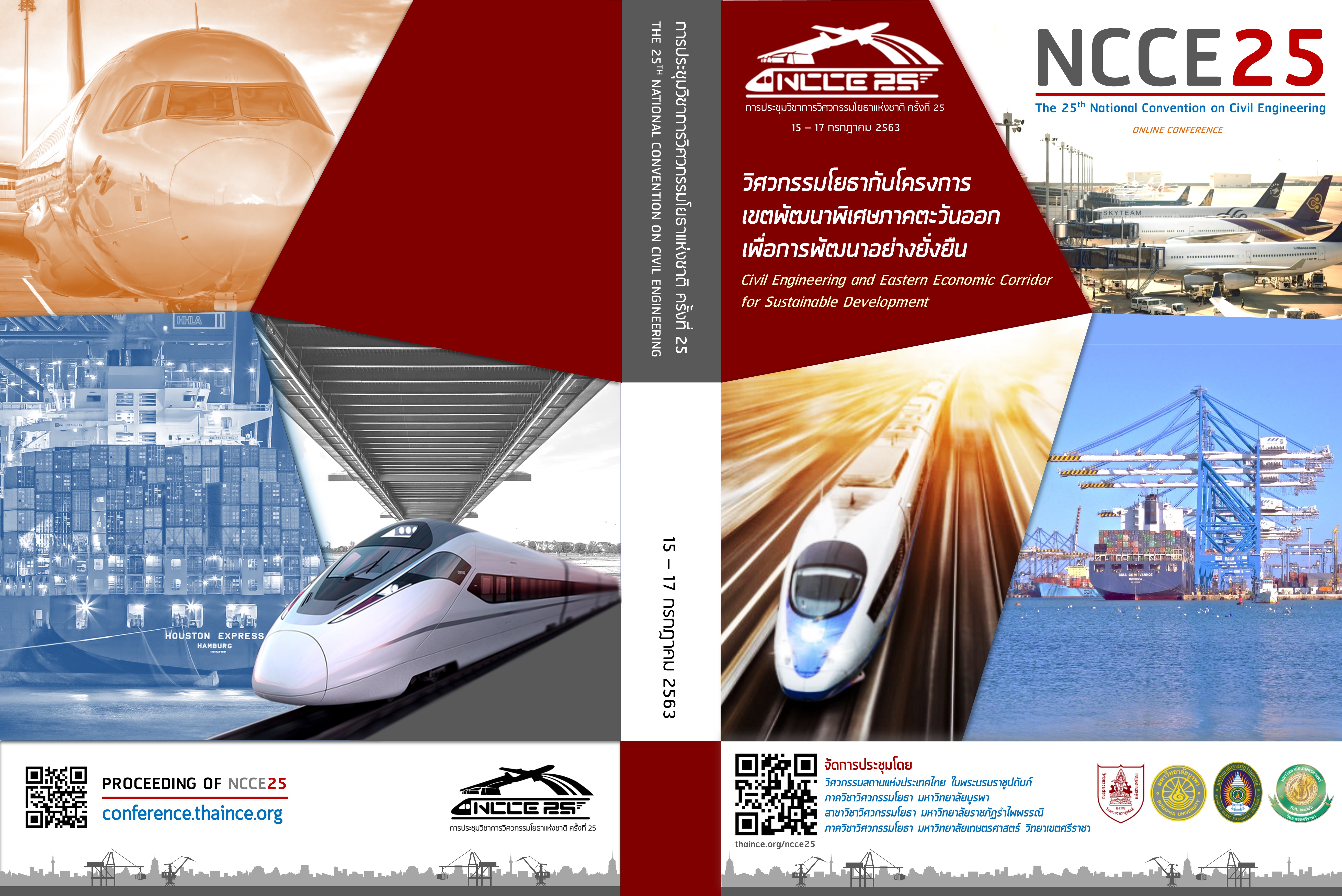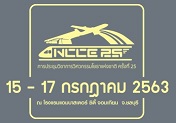Chloride Resistance and Compressive Strength of Concrete Containing Synthetic Zeolite
Keywords:
ความต้านทานคลอไรด์, คอนกรีต, ซีโอไลท์สังเคราะห์, กำลังอัดAbstract
This paper aims to study the chloride resistance and compressive strength of concrete containing synthetic zeolite. In this paper, Portland cement type I and synthetic zeolite were used as cementitious materials. The synthetic zeolite to binder ratios were kept at 0.01, 0.03, 0.05, and 0.10. Water to binder ratios were kept at 0.50 and 0.60. The rapid chloride penetration and compressive strength of concrete were performed at 7, 28, 56 and 91 days of curing time. From the experimental results, it was seen that concretes with synthetic zeolite had better chloride resistance than cement-only concrete at all water to binder ratios. Concrete with synthetic zeolite to binder ratio of 0.03 had the best chloride resistance. But, concretes with synthetic zeolite had lower compressive strength than cement-only concrete.
Downloads
References
[2] Tangtermsirikul, S. (2003). Durability and mix design of concrete (1st edition). Pathum Thani: Thammasat University, Rangsit Campus.
[3] Davis, M.E. (1991). Zeolite and molecular sieve : not just ordinary catalyst. Ind. Eng. Cham. Res., 30, pp. 1675-1683.
[4] Najimi, M., Sobhani, J., Ahmadi, B. and Shekarch, M. (2012). An experimental study on durability properties of concrete containing zeolite as a highly reactive natural pozzolan. Construction and Building Materials, 35, pp. 1023–1033.
[5] American Society for Testing and Materials (ASTM). (2000). ASTM C1202, Standard test method for electrical indication of concrete's ability to. resist chloride ion penetration.
[6] British Standards (BS). BS 1881-116, Method for determination of compressive strength of concrete cubes.
[7] ธีรวัฒน์ สินศิริ, ชูวิทย์ นาเพีย และ ศักดิ์สิทธิ์ พันทวี. (2550). ผลกระทบของซีโอไลท์ต่อโครงสร้างขนาดเล็กของซีเมนต์เพสต์ผสม. การประชุมวิชาการโยธาแห่งชาติครั้งที่ 12, พิษณุโลก, 2-4 พฤษภาคม 2550.
[8] Valipour, M., Pargar, F., Shekarchi, M. and Khani, S. (2013). Comparing a natural pozzolan, zeolite, to metakaolin and silica fume in terms of their effect on the durability characteristics of concrete: A laboratory study. Construction and Building Materials, 41, pp. 879–888.
[9] Ikotun, B.D. and Ekolu, S. (2010). Strength and durability effect of modified zeolite additive on concrete properties. Construction and Building Materials, 24, pp. 749–757.
[10] Canpolat, F., Yılmaz, K., Kose, M.M., Sumer, M. and Yurdusev, M.A. (2004). Use of zeolite, coal bottom ash and fly ash as replacement materials in cement production. Cement and Concrete Research, 34, pp. 731–735.
Downloads
Published
How to Cite
Issue
Section
License
บทความทั้งหมดที่ได้รับการคัดเลือกให้นำเสนอผลงานในการประชุมวิชาการวิศวกรรมโยธาแห่งชาติ ครั้งที่ 25 นี้ เป็นลิขสิทธิ์ของ วิศวกรรมสถานแห่งประเทศไทย ในพระบรมราชูปถัมภ์



